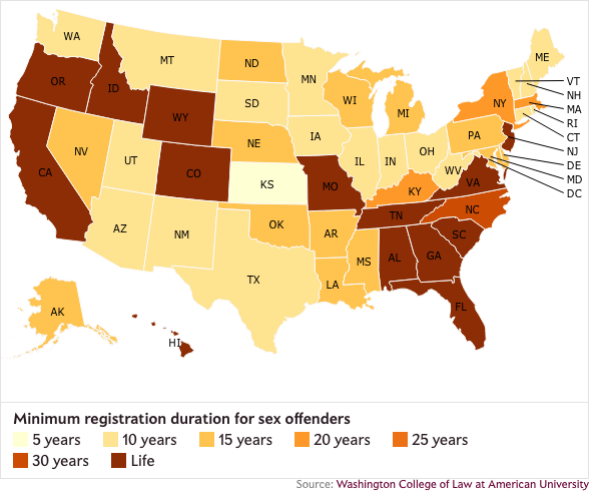-
Offenders on Federal Supervised Release Hits All-Time High

Number of Offenders on Federal Supervised Release Hits All-Time High
Average inmate faces nearly four years of community monitoring after incarceration
With nearly 190,000 inmates, the federal prison system is the largest in the nation, far exceeding those of California, Texas, and other states.1 But the reach of federal corrections extends well beyond prison walls. In 2015, approximately 115,000 offenders were serving a period of post-prison community monitoring known as supervised release—nearly three times as many as in 1995.2 (See Figure 1.) The average time spent under supervision rose 12 percent during that period, to nearly four years.3
Although post-prison monitoring can be an important correctional tool, research shows that policymakers can maximize limited resources and maintain public safety by reducing the length of supervision for certain offenders and prioritizing oversight and services for those most likely to reoffend.4
[…]
This post is excerpted due to copyright. Visit PEW Reports to read the full article.http://www.pewtrusts.org/en/research-and-analysis/issue-briefs/2017/01/number-of-offenders-on-federal-supervised-release-hits-all-time-high
Reducing supervision terms for some offenders can improve outcomes
Post-prison monitoring is an essential feature of any correctional system, but extended periods of community supervision can have negative consequences for offenders and the public. One common result is that more offenders are sent to prison for violating the terms of their supervision (known as technical violations) than for new crimes. More than two-thirds of all federal offenders who are revoked from supervised release each year committed technical violations but were not convicted of new crimes.17
Research shows that policymakers can safely scale back post-prison monitoring for some offenders to ensure that limited resources are directed toward those most at risk of reoffending. A Sentencing Commission study released in March 2016 found that most rearrests, both for new offenses and technical violations, occur within two years of an inmate re-entering the community.18 The study, which tracked more than 25,000 offenders for eight years, found that nearly 17 percent were arrested within the first year of the follow-up period, compared with less than 2 percent in the eighth year.19 The median time between release and first rearrest was 21 months.20 These data align with a substantial body of existing research showing that supervision resources should be “front-loaded” on offenders who have recently left prison.21
Other studies have shown that shortening supervision terms for compliant offenders does not negatively affect public safety. Federal law gives courts the authority to reduce terms if they find it is “warranted by the conduct of the defendant … and the interest of justice.”22 A 2013 study of that provision by the Administrative Office of the U.S. Courts found that 10.2 percent of offenders who were granted early termination of their supervision in 2008 were rearrested within three years, compared with 19.2 percent of those who completed full terms.23 Recent Pew research also found that a state-level policy in Missouri that allows certain probationers and parolees to shorten their supervision terms by complying with their conditions of release similarly did not result in higher recidivism rates.24
Copyright © 1996-2017 The Pew Charitable Trusts. All rights reserved.
What We Are Doing for February AZ Supreme Court: Bail denial for child sex offenses is unconstitutional
Offenders on Federal Supervised Release Hits All-Time High
Arizona MVD a Bit Unusual
Make sure you know current requirements. You can go to your Sheriff's Office website to see if there is new information there. If so, we suggest you do a screen print and save it. Call your registry office to get clarification on any questions you might have. Document the date, time, who you spoke with and their instructions regarding any address change, vehicle, employment, travel dates if required, etc.
Keep in mind if you are required to update your drivers license annually through the Department of Motor Vehicles (DMV) you should contact them for their status.
Be safe, be smart, stay healthy and know we will get through this.Stay Updated with Arizona W.A.R.
All information is confidential and we do not distribute any data whatsoever.
The W.A.R. Support Line:
Links to and From WAR
WAR


